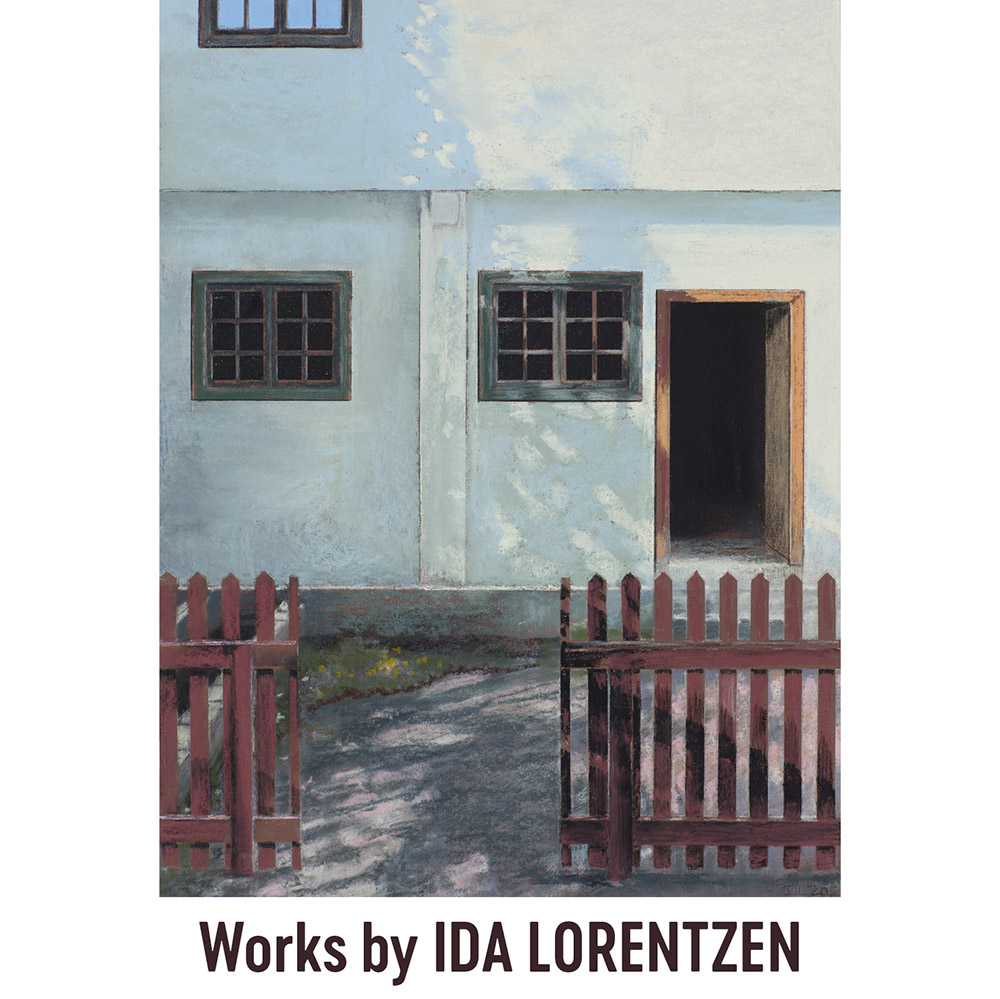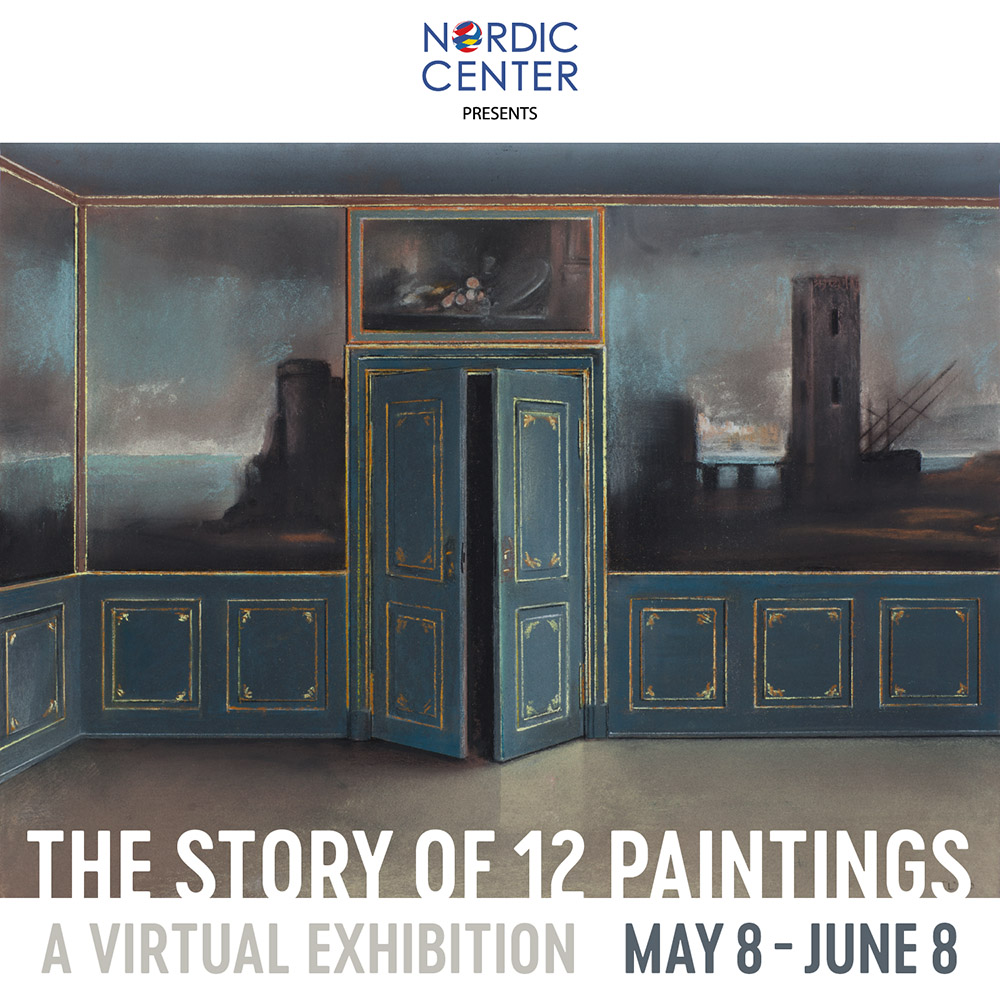A Virtual Exhibition
About the Artwork
The old buildings of the Norwegian Folk Museum have always had a grip on my imagination. Here, where people have lived through the ages, where they’ve eaten, loved and slept, given birth and breathed their last, I feel their human presence still remains. Though their stories ended long ago, they left a tangible aura within these structures. Each place has its own distinct soul. For this exhibition, I have selected 12 motifs, each inspired by a specific building.
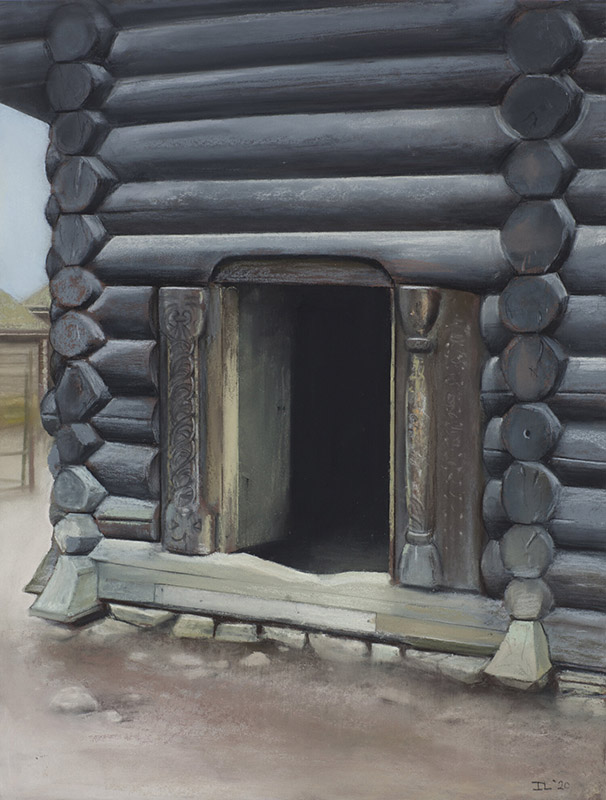
My painting story begins with ”Raulandstua”. A log cabin built in 1238, it is, incredibly, the oldest preserved wooden house in the world. Remarkably well maintained both inside and out, it gives the impression that it will last forever. Raulandstua is in an unobtrusive location at Numedalstunet and could be easily overlooked. Once you crouch down to pass through its low door, however, you will be overwhelmed. The large room inside has a high ceiling, beautiful timber walls and a long table resting on the dry, cracked earth floor.
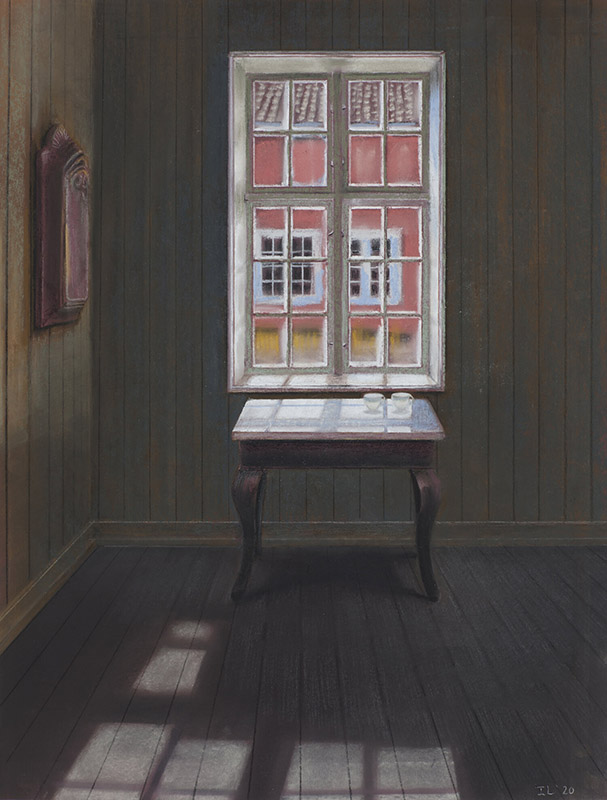
One of the Norsk Folkemuseum’s most beautiful houses is ”Chrystiegården”. It was built in 1761 as a home for wealthy residents of Brevik. In this deceptively idyllic setting there was an abundance of everything except medicines. Sickness affected both rich and poor. That’s why I painted only two cups on the table. They can break so easily. In that time, as today, life was fragile for everyone.
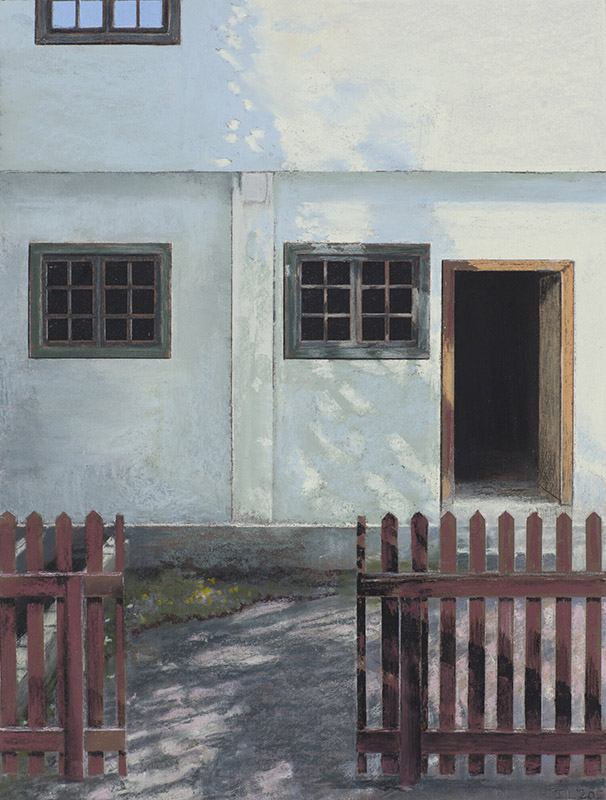
This ordinary looking building served as the capital’s prison in the early 19th century. Inside, the preacher and industrialist Hans Nielsen Hauge endured solitary confinement for seven years without being convicted of a crime. His cell was on the second floor, and we can see a tantalizing reflection of blue sky in what was his window. The building’s entrance is a dark rebuke to the outside world’s freedom and light. Hauge, who lived for 53 years (1771–1824), accomplished much in a relatively short time. He and his followers, the haugianerne, challenged the establishment. As a spiritual leader, he helped pave the way toward the liberal democracy we have in Norway today.

The interior of the prison is spare and foreboding. Stairs lead to the second floor, where Hans Nielsen Hauge was confined. Cells for (male) citizens were through the door on the left; to the right, there was a cell for women. There was also a large cell for common criminals because, even in prison, people were separated by class and gender.
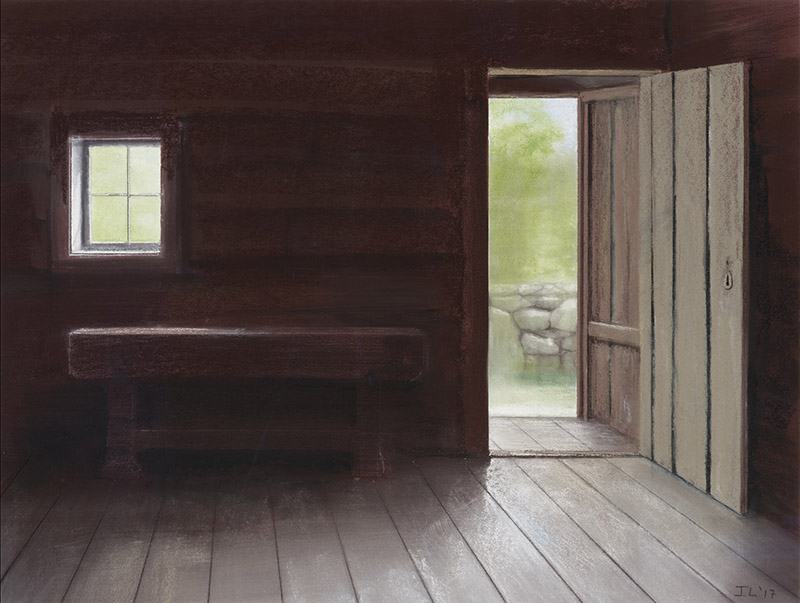
“Lendestova” was built in 1845 in Jæren, on the southern west coast of Norway, near Stavanger. The outside of the house is white and surrounded by the type of charming stone wall common to the town. In contrast to this pleasant setting, the inside of the house is gloomy; it gives me a feeling of needing to escape. Between 1830 and 1920, hundreds of thousands of Norwegians left for the ‘Promised Land’ of America. The majority came from the area where this house was built.
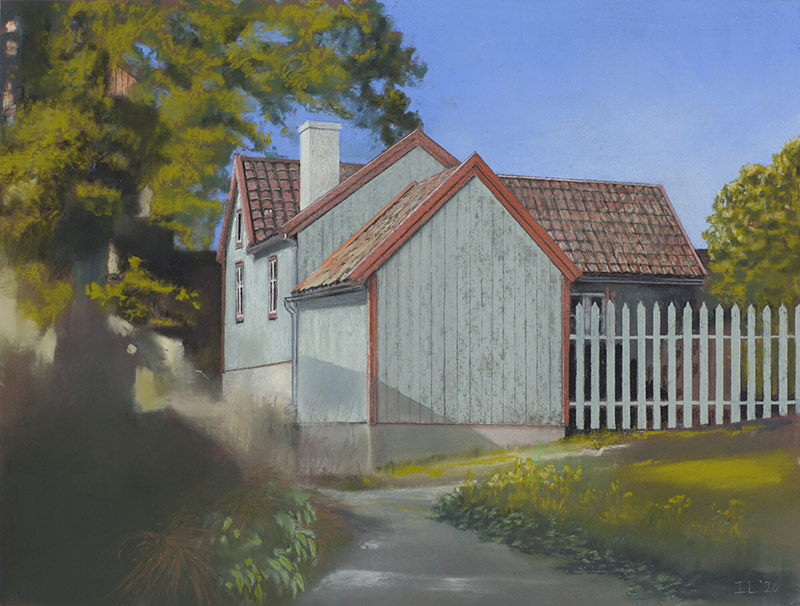
It looks peaceful, almost romantic here in Johannesgate at Enerhaugen. We are in the 1850s. A green picket fence surrounds the small houses, and a majestic leafy tree stretches to the sky. The inside is not quite as idyllic: working-class families with many children lived cramped in only one or two rooms. Several families shared kitchens. There was a housing shortage in Oslo, and the transition to an industrial society led to, among other things, a massive migration. Perhaps it’s paradoxical that in 2020 I portray these houses so romantically. Or perhaps I long for the past, even a troubled one.
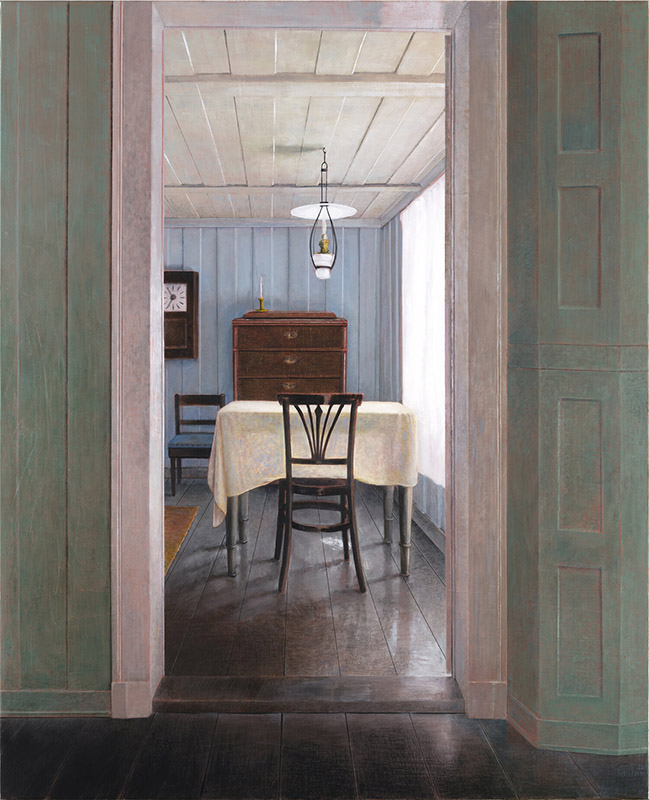
While I was painting the living room in Johannesgate, I was struck by the atmosphere of proud simplicity. Despite the poverty of those who lived here, I could feel their dignity. The room was so low-ceilinged that I had to bend my neck to enter it; to give the painting more air, I added fictional height to the room.
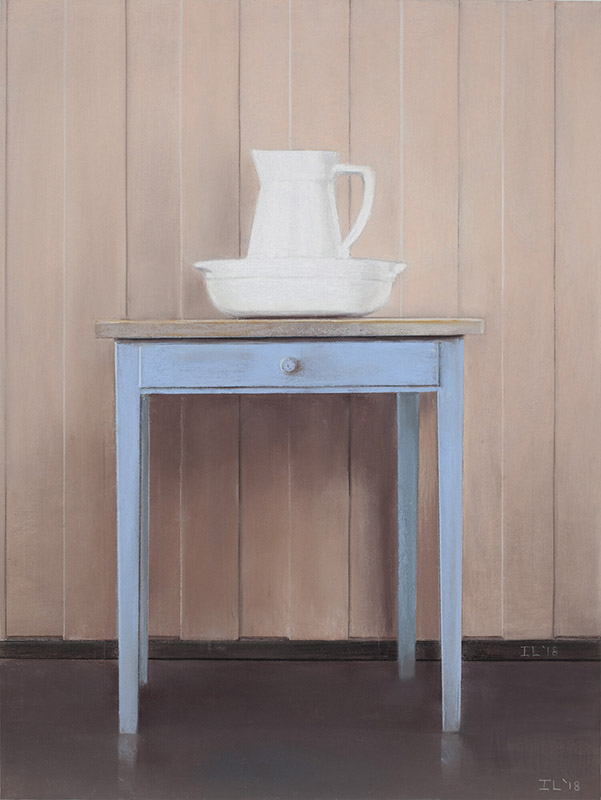
The still life with a washbasin and water pitcher is an illustration of how people kept clean in the 19th century. As I painted it, I thought about Eilert Sundt (1817–1875), Norway´s first sociologist and a pioneer in researching how people lived. It was during his time that the concept of public health was first developed, along with guidelines for preventive medicine. These included the importance of washing one’s hands with soap and water.
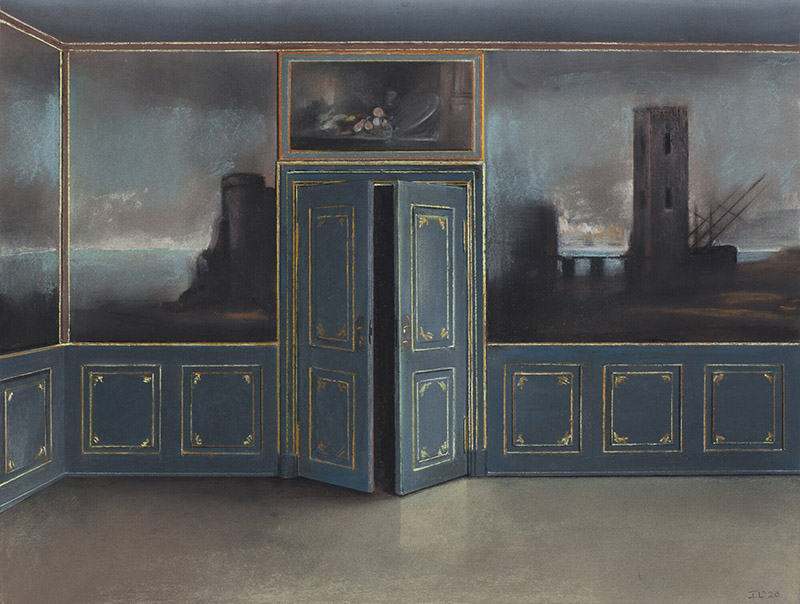
This is one of my favorite rooms at Norsk Folkemuseum. It is part of the permanent exhibition, ”Tidsrom”. Among wealthy Norwegians at the time, it was common to have a lavish and elegant parlor room, which served as a buffer between the outside world and the residents’ private quarters. The room was originally furnished by a young, newly married couple, in 1760. Here they welcomed guests and conversed and drank endless cups of tea. The wall murals depicting ports in the Mediterranean suggest that they were well-traveled and cosmopolitan. The half-open doors piqued my curiosity about what secrets might be hidden in the rooms beyond.
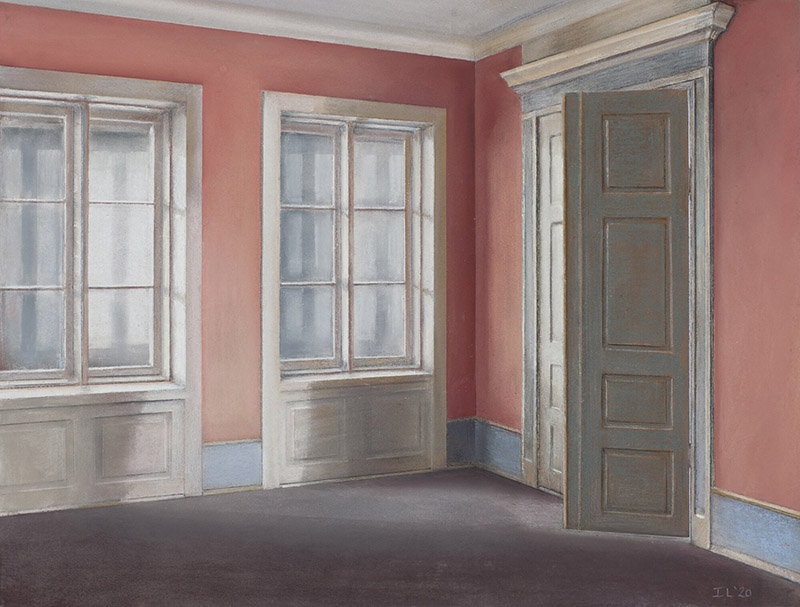
1814 is perhaps Norwegian history’s most important year. After being ruled by Denmark (under an absolute monarchy), we ended up in a union with Sweden (under a constitutional monarchy). This room is from a house belonging to Jørgen Herman Vogt, a politician who served in the Norwegian-Danish government and, after 1814, in the Norwegian- Swedish government, later becoming the de facto prime minister. He was married twice and had two sets of children. His home was damaged by smoke due to a fire on the same block and then redecorated as we see it today. I painted light coming in from two different directions as a metaphor for his two-fold life.
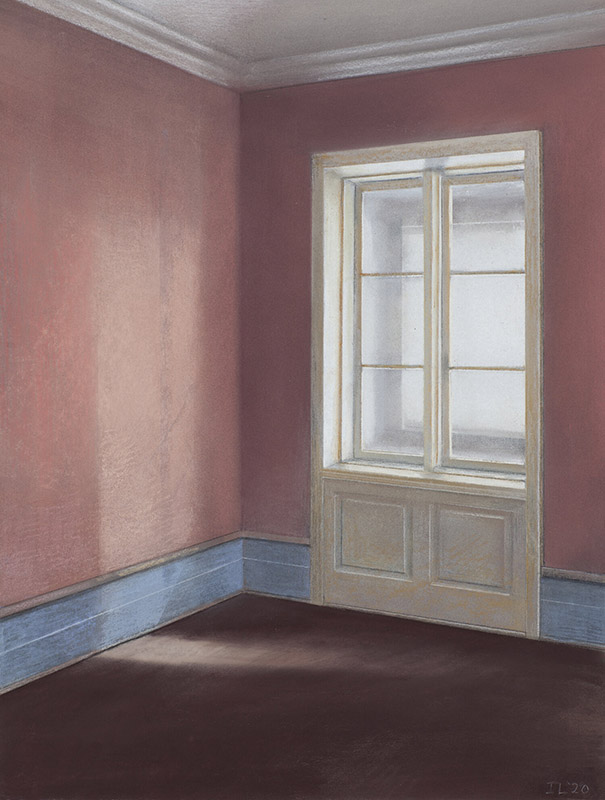
We are in the same room, but at the moment when light from the window makes the pink wall glow. During the Victorian era, pink walls were as popular as gray walls are in today’s world. As I painted, I meditated on pink and wondered how such a beautiful color fell out of fashion in traditional home décor. It’s a color of nostalgia yet offers a unique sense of ease that we might need in the future.
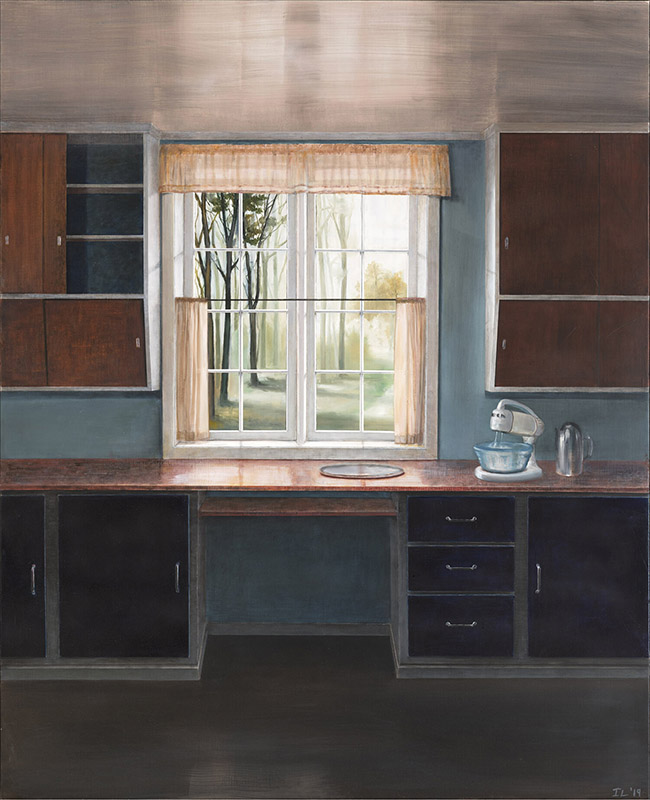
This kitchen is from a farmhouse in Trøndelag that was built in 1959. In real life, it is big and bright, but I chose to depict it as cramped and dark so our eye is drawn to window and the light outside. I was a little girl in 1959 and was taught that housework was what women did. I remember it well. Things have changed since then, but division of labor in the home is, in my opinion, one of the most important gender-equality issues in Norway today. That is why it was important for me to paint this painting.
About the Artist
Ida Lorentzen was born in New York and lives and works on Nesoya near Oslo. She is known for her interiors, the study of light, and space that tell stories. Her work is widely recognized in the United States, Norway, and Europe. Learn more about Ida at www.idalorentzen.com.
